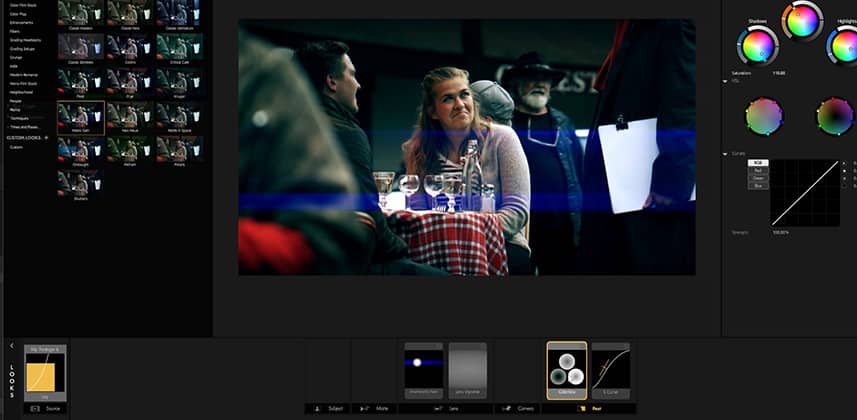| Series |
|---|
Revisiting the latest version of Magic Bullet Suite
Magic Bullet has a long and storied history dating back to the early transition to Digital Video cameras in the early 2000’s. Since those early successful days, Red Giant Software moved Magic Bullet from beyond the ‘film look’ plugin and developed an entire suite of plug-ins for all the major non-linear editing platforms.
In a previous Insight, I looked at Magic Bullet Looks 3 (and in the context of my FCP X Desert Island Challenge I’ve looked at other plugins in the Magic Bullet Suite). I make no secret that I’m a huge fan of Magic Bullet Looks. But…
I never use Magic Bullet Looks on client-attended color sessions
There are a few reasons for this:
- Magic Bullet Looks always required rendering since its real-time playback was non-existent. Anywhere from 5 – 12 frames per second was the most I could ever get with that plug-in applied. And I can never judge the final quality of a look without seeing it playback at near real-time. Typically – I’d use Looks to create the look. Then I’d recreate it by hand, in DaVinci Resolve (or Apple Color, many moons ago) to maximize my playback and render times.
- Until recently, Magic Bullet Looks couldn’t output to an external, color-managed display. As a colorist, I often throw my computer displays out of whack, so there’s never a question of which display is the proper reference. This made working in Looks difficult since I could never be sure of my final result until I applied the Look and exited out of the plug-in.
Is Magic Bullet Looks 4 now fast enough for client-attended sessions?
One of the headline features in Looks 4 is its GPU acceleration. In other words, it’s no longer limited by the capabilities of your CPU – and in theory, this should massively speed up the playback and render performance of the plug-in.
But if you’ve been in this business a while, you know that merely making a plug-in GPU aware isn’t enough. The software has to be re-written to optimize how it works with your graphics card. Some plug-ins (like Blackmagic’s ResolveFX) are super-optimized. Other plug-ins get almost zero performance boost since their developers don’t know how to program for GPU processing.
In this Insight, we explore the performance gains (or not) of Magic Bullet Looks 4.
Our primary focus is answering the question: Is the new GPU-aware Magic Bullet Looks 4 fast enough to keep a color grade session moving?
Member Content
Sorry... the rest of this content is for members only. You'll need to login or Join Now to continue (we hope you do!).
Need more information about our memberships? Click to learn more.
Membership optionsMember Login


